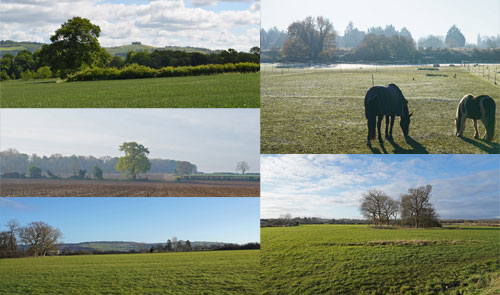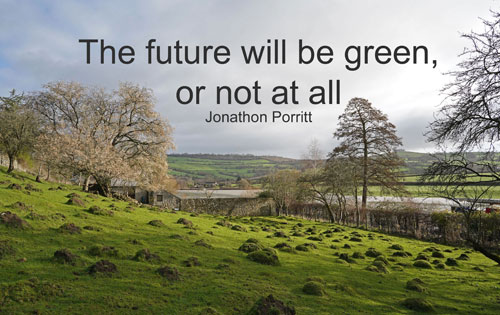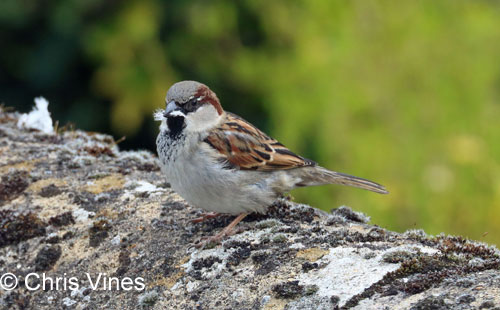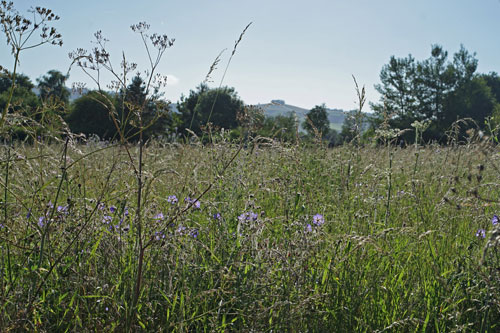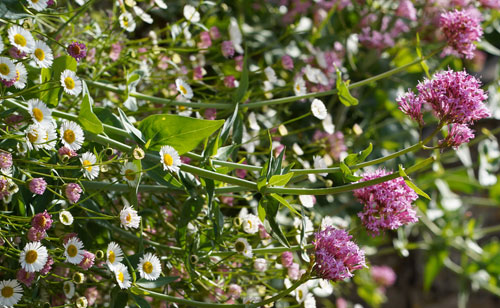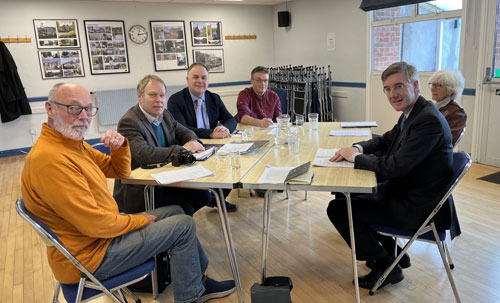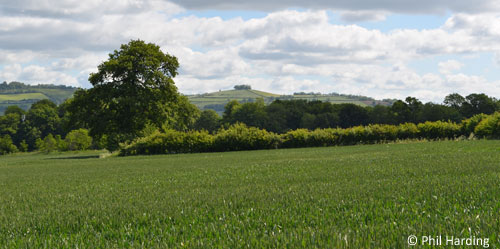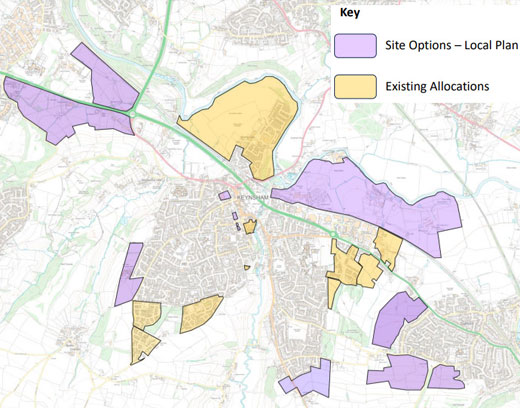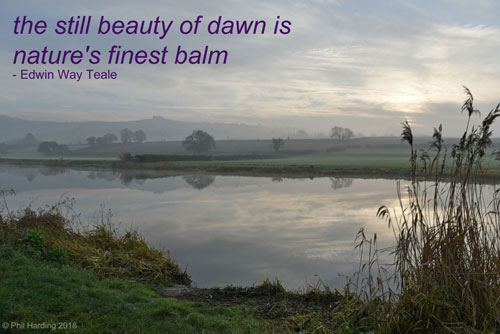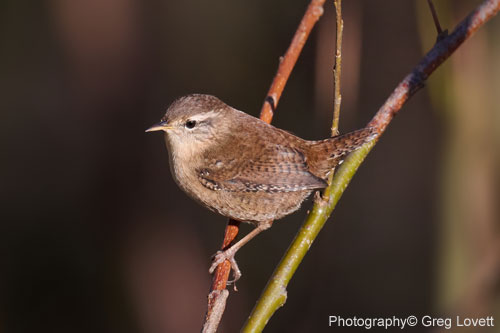|
Saltford Environment Group
|
Home | About Us | News | Website Contents & Links | Contact/Join SEG
Popular topics: Fairtrade - Green Belt - History of Saltford - Station - Wildlife

Don't blight the land that feeds you
|
(Click on links or scroll down this page) LATEST NEWS :-
Over 7,500 comments on proposed Local Plan options Earth Day 2024: Planet vs. Plastics 2024 Big Garden Birdwatch results Making Saltford a haven for pollinators Recent promises to protect the Green Belt and villages in BaNES SPC meets local MP to discuss need to protect Saltford's Green Belt SPC resolves its response to BaNES Local Plan Options Consultation Saltford's Green Belt is an Area of Great Landscape Value, says SPC Annual Saltford Dawn Chorus Walk, 28th April Objection reasons for 1,300 new houses in Saltford's Green Belt! B&NES Council launches Local Plan Options Consultation SPC takes firm line responding to B&NES Council on landscape designation request More news in our news archive >> Over 7,500 comments on proposed Local Plan optionsApril 2024
BaNES Council has issued a press release announcing that the council had received more than 7,500 comments on the proposed options for future development needs across Bath and North East Somerset. The Local Plan Options consultation gave people the opportunity to add their comments about where BaNES Council should plan for the delivery of new homes and jobs and what policies are needed for addressing the climate and ecological emergencies. The options were approved by the council's Cabinet earlier this year and "support the council's Corporate Strategy and Economic Strategy, which aim to deliver a fairer, more prosperous and sustainable economy." A key objective for the Local Plan is to maximise the delivery of housing that is more affordable and the government's standard assessment suggests, according to BaNES Council, an estimated need for 14,500 additional homes up to 2042. Of those, more than 6,000 will be built on sites, mainly brownfield sites in Bath, which are already committed for development via planning permission or allocated in the current Local Plan. Councillor Mathew McCabe, Cabinet Member for Built Environment and Sustainable Development, said: "We'd like to thank everyone who took the time to respond and comment on our proposed plans and policies. Although we had some software teething problems at the start, we received nearly 7,000 responses online. That's three times more than any previous planning consultation and in total is double the number of comments we have received for any of the previous planning policy consultations. The planning team will carefully consider the issues raised in the comments and feedback and they will help to shape the Draft Local Plan." The council stated in its press release that it "will work closely with key stakeholders on the Draft Local Plan which will be produced and subject to full public consultation early next year giving residents another opportunity to have their say." The Draft Local Plan will then be submitted to the Secretary of State and examined by an independent planning inspector. Once approved by the inspector, it will be adopted by the council. When adopted, the Local Plan will guide planning decisions until 2042. SEG would like to thank every SEG member and resident of Saltford who submitted a robust response to the proposed development options in Saltford's precious Green Belt and in the landscape described by Saltford Parish Council (SPC) as "The Saltford Area of Great Landscape Value" (see our March 2024 news story Saltford's Green Belt is an Area of Great Landscape Value, says SPC). The two proposals from BaNES, if finally approved for development, would result in a total of 1,300 new houses and a new school for West and South Saltford, i.e. on our local Green Belt landscape. The fact that more responses were received by BaNES Council than for any of the previous planning policy consultations suggests that the proposed options were found to be unsuitable and totally inappropriate by many people; the "software teething problems at the start" may hide a large number of responses that could have been lost in the process when responders assumed their responses had been accepted and logged, but the online IT system failed to do so. The full extent of that loss is likely to remain a mystery. There are concerns in the village over technical and other issues with the online options consultation. SPC agreed at its April meeting that its Planning Policy Working Group would discuss this matter further, and that the Working Group would look to make recommendations for an item to be considered at SPC's May meeting (on 7th May) when it will also have discussed and recommended for resolution by the full SPC a formal complaint to the Chief Executive of BaNES Council about the council's management of SPC's request for a protective landscape designation for Saltford South. SEG and our Green Belt Campaign Team will be keeping a watching brief on whether development options for Saltford's Green Belt go into the Draft Local Plan and provide guidance as necessary on how residents should respond in early 2025 to the next "opportunity to have their say". Further developments on these key issues for Saltford will be published on our website ('Latest News' section) as they arise. Earth Day 2024: Planet vs. PlasticsApril 2024
22nd April was Earth Day. This year's theme (at earthday.org) is the commitment to end plastics for the sake of human and planetary health, demanding a 60% reduction in the production of ALL plastics by 2040. Planet vs. Plastics unites students, parents, businesses, governments, churches, unions, individuals, and NGOs in an unwavering commitment to call for the end of plastics for the sake of human and planetary health, demanding a 60% reduction in the production of plastics by 2040 and an ultimate goal of building a plastic-free future for generations to come. "The word environment means what surrounds you. In the case of plastics we have become the product itself - it flows through our blood stream, adheres to our internal organs, and carries with it heavy metals known to cause cancer and disease. Now this once-thought amazing and useful product has become something else, and our health and that of all other living creatures hangs in the balance," said Kathleen Rogers, President of EARTHDAY.ORG. "The Planet vs. Plastics campaign is a call to arms, a demand that we act now to end the scourge of plastics and safeguard the health of every living being upon our planet." #EarthDay 2024 Big Garden Birdwatch resultsApril 2024
The results for the 2024 Big Garden Birdwatch held on the weekend of 26 - 28 January are now published by the RSPB. The top ten most commonly observed birds across the UK are listed below. All 10 had no change on last year's position with the exception of the Great Tit (+1 at 7th) and Goldfinch (-1 at 8th) that swapped places. The list is (with UK Conservation Status listing in brackets):- 1. House Sparrow (Red)
Top spot goes to the House Sparrow for the 21st year running despite a drastic decline in the UK over the past 50 years, so much is this decline that they are on the UK Red List for birds. Over 610,000 people took part this year counting 9.7 million birds(!). More information on the results of the 2024 Birdwatch can be found on the RSPB website. You can also find more information on social media using the hashtag #BigGardenBirdWatch. One way to help garden birds is by encouraging insects. Why not let a patch of your garden grow wild this spring and summer? A full list of the 103 birds that are presently of regular occurrence in Saltford with ID links to the RSPB website for each species can be found on our Wildlife page >> Making Saltford a haven for pollinatorsApril 2024
We can help make Saltford a haven for pollinators including bees if we all do our bit and adopt some or most of the five actions from the UK's National Pollinator Strategy in the way we manage our gardens and public areas. These are:-
Insects pollinate, but by far the most effective pollinator is the honey bee. More information about bees and what you can do to help them can be found on our wildlife page from this link >>
In 2023 SEG helped set up Saltford4Nature, a small group of residents with the aim of starting to make the village's green areas simultaneously both more nature friendly and visually attractive. If this is something that you would like to become involved with and/or for further details, please email Christine and Pat(rick) Brown of Saltford4Nature at saltford4nature@gmail.com. Recent promises to protect the Green Belt and villages in BaNESMarch 2024 As our members are aware, SEG takes a politically neutral position and, in the interests of protecting the natural environment in and around Saltford, seeks to work in co-operation with representatives of the mainstream political parties that have been elected to represent our community at the national and local level. In the May 2023 local elections, the Lib Dems retained control of BaNES Council and they also retained the two Saltford Ward seats. In the context of the forthcoming new Local Plan for the period 2022-2042 and the current Local Plan Options Consultation (until 16 April), the following are direct quotes from the May 2023 Lib Dems full manifesto (Ambitious for B&NES: A Positive Vision with the Liberal Democrats) :- GREEN BELT
VILLAGES
*This is summarised on the Lib Dem website news story of 4 May 2023 "Our manifesto for 4 May 2023 elections" under the heading 'Affordable houses in the right places' as follows:-
HOMES
*This is summarised on the Lib Dem website news story of 4 May 2023 "Our manifesto for 4 May 2023 elections" under the heading 'Affordable houses in the right places' as follows:-
FOOD
SEG takes the view that sustainable development needs to be the overarching objective for new housing developments. The SEG Local Plan Options consultation response, submitted to BaNES Council on 11th March, is along the same lines of the above promises. You can read the full text of SEG's response by clicking on this link (pdf opens in new window) :- Don't forget to make your online response to the Local Plan options consultation from BaNES by no later than 5pm 16th April. SEG's guide for making an effective response to 1,300 houses on our Green Belt in the BaNES Local Plan can be found in our news story here >> SPC meets local MP to discuss need to protect Saltford's Green BeltMarch 2024
On the afternoon of Friday 15th March, members of Saltford Parish Council's Planning Policy Working Group, Cllrs Jon Godfrey (SPC Chair), Phil Harding (Planning Chair), David Halton (SPC Vice-Chair) and Gary Graveling (Planning C'tee), met with Saltford's local MP, Sir Jacob Rees-Mogg at Saltford Hall. As reported on SPC's website, the meeting, held at Saltford Hall, was requested by SPC following BaNES Council's dismissal of SPC's request originally made in January 2023 and reaffirmed by SPC in January 2024 for a landscape designation for Saltford's Green Belt south of the A4 Bath Road (originally referred to by SPC as 'Saltford South'). The meeting discussed the next steps available to SPC to achieve designated landscape protection for Saltford's Green Belt following BaNES Council's disappointing attitude towards protecting important landscapes in its area and in particular historic landscapes that are highly valued by the local community. Actions available to SPC with regards to BaNES Council's dismissal of SPC's request for landscape protection were discussed, including options for SPC to appeal directly to the Secretary of State or to follow the Judicial Review process. Any actions with regards to these options would be resolved at a future SPC meeting at the time deemed appropriate in the Local Plan process by Parish Councillors. SPC Councillors took the opportunity to express SPC's concerns to Sir Jacob about the significant negative impact of 1,300 residences proposed for Saltford in the BaNES Local Plan Options Consultation (800 at 'South Saltford' and 500 at 'West Saltford'). This included that, should 'West Saltford' be developed as proposed in the Local Plan Options consultation, the Green Belt between Saltford and Curo's Withies Green development in Keynsham would measure just 160 metres. SEG welcomes SPC's strong commitment to protecting Saltford's Green Belt and is grateful that Sir Jacob Rees-Mogg came to Saltford to meet and discuss in detail the options for securing its longer-term protection and gave a promise to make representations to the Planning Inspector on SPC's behalf at the appropriate time in the Local Plan timetable. More information about the meeting can be found on SPC's website from this link. SEG asks BaNES to comply with Government policy on the Green Belt! (Local Plan consultation response)March 2024
On 11th March SEG's Executive Committee submitted its online response to the BaNES Council Local Plan Options Consultation. Within its detailed response SEG said :- "On behalf of the strongly expressed wishes of the local community and the 560+ members we represent, Saltford Environment Group implores B&NES Council to comply with the spirit and intent of national planning and environmental policies (i.e. NPPF and EPPS) by protecting the Green Belt in Bath and NE Somerset, and in particular around Saltford that is gradually becoming the last remaining green open space on the Bath Road A4 corridor between Bristol and Bath." SEG provided a "Strongly Object" response to the options for West Saltford, South Saltford, SE Keynsham and a qualified "Partially Object" response for the North Keynsham development option. SEG also submitted comments on the South of Burnett (next to A39) potential site for which SEG has serious concerns about the negative impacts of that future potential option, "Partially Object" responses with comments on the "Keynsham and Saltford: Area overview" and the "Transport Opportunities" sections and a detailed response to the "Green Belt" development management policy options section of the consultation. SEG asked BaNES Council, as our Local Planning Authority, to accept and implement Saltford Parish Council's landscape designation request for Saltford's Green Belt submitted in January 2023, reaffirmed in January 2024, and further explained by letter from SPC to the BaNES Cabinet in February 2024. This request was for Saltford's Green Belt area south of the Bath Road A4. You can read the full text of SEG's response by clicking on this link (pdf opens in new window) :- The consultation period ends at 5pm on 16th April (deadline was 8th April but then extended after technical issues with online responses were resolved). SEG's guide shows you how to make an effective response concerning the south and west Saltford options. SPC resolves its response to BaNES Local Plan Options ConsultationMarch 2024 At its meeting on 5th March, Saltford Parish Council SPC resolved a 'Strongly Object' response to proposals at South Saltford and West Saltford in the BaNES Local Plan Options Consultation. The resolved response included robust and detailed comments for proposals at 'South Saltford' (800 residences + primary school) and 'West Saltford' (500 houses + primary school) to support SPC's 'Strongly Object' stance to those proposed options. SPC also resolved responses to other proposals and policy aspects of the consultation:-
In addition to SEG's response guidance (see news story below), residents might also like to see SPC's response for further points they might wish to make in their own response. SEG strongly advises support for SPC's landscape designation request for the area of Saltford south of the Bath Road A4 in consultation responses, e.g. for responses to the Section "Keynsham and Saltford: Area overview". SPC's website provides further information and a copy of the full SPC response which can be found from this link to the SPC website >> Alternatively you can download SPC's response as a pdf directly from the SPC website from this link:- SPC response pdf. The consultation period ends at 5pm on 16th April (deadline was 8th April but then extended after technical issues with online responses were resolved). SEG's guide shows you how to make an effective response. Saltford's Green Belt is an Area of Great Landscape Value, says SPCMarch 2024
At Saltford Parish Council's meeting on 5th March, it resolved to adopt as a planning policy document its new paper "The Saltford Area of Great Landscape Value - Planning Policy and Character Appraisal by Saltford Parish Council". SPC agreed that this new Saltford Area of Great Landscape Value paper would serve as a reference document for SPC planning policy purposes, specifically in relation to future proposals that may affect or seek to develop Saltford's Green Belt landscape area. Saltford Parish Council, in describing Saltford's landscape setting as an Area of Great Landscape Value, seeks to provide information and data that offers planners and developers a greater insight of this landscape's high quality and value to the community. SPC makes the point in its paper that the support and recognition of Saltford's Local Planning Authority, BaNES Council, for a landscape designation, through either an AGLV or NE2a (Landscape Setting of Settlements) designation, would provide reassurance to the community of Saltford and neighbouring parishes that the Local Planning Authority values this landscape as much as the community it seeks to represent and will protect it from development. ENDORSEMENTS The community's great value that it puts on the local landscape both for the health and wellbeing of the community and for the important habitat it provides for wildlife, is demonstrated by the endorsement of the paper by Saltford Community Association, St Mary's Parochial Church Council and Saltford Environment Group. Furthermore, the Avon & Bristol Branch of the CPRE (Campaign for the Preservation of Rural England) has endorsed the paper too. In confirming the CPRE's endorsement the Area Director said that "this is a comprehensive and rigorous report. In the context of the ecological and climate emergency declared by BaNES, a community led approach to character appraisal such as this should be applauded. ...CPRE local area branch endorses the aims and objectives of the document and the importance of protecting from development Saltford's Green Belt landscape surrounding the village." PHOTOGRAPHIC RECORD As a stand alone document but also to complement the "The Saltford Area of Great Landscape Value" paper, at its 5th March meeting SPC also resolved to adopt as a SPC document "Saltford's Area of Great Landscape Value - A Photographic Record". The collection of photographs it contains provides a snapshot and will become a historical record of the rural countryside setting that the Green Belt surrounding Saltford's housing boundary provides at the present time. SEE THE NEW DOCUMENTS You can download the documents below from these links:-
As these documents are of significant importance to the community whilst forming a historical record, SEG has archived and made available copies of both papers in SEG's History of Saltford Project - Document Library. FURTHER INFORMATION Further information about these important new documents can be found on SPC's website from this link >> Map reveals potential urban sprawl from Bristol to Saltford & further information (incl. "Should Saltford take more housing..?")March 2024
This map from BaNES Council shows the Local Plan (2022-2042) site options under consideration for the Hicks Gate, Keynsham and Saltford area (Saltford is on the bottom right corner of the map). No decision has yet been taken as to which options will be taken forward for development to the Draft Plan stage. It is therefore important that Saltford residents submit effective responses to the options consultation - see our February news story "Objection reasons for 1,300 new houses in Saltford..." for guidance from SEG on how to make an effective response. Following the drop-in event organised by BaNES Council in Saltford Hall on 29th February, BaNES Council has shared the following PDFs, that were displayed as panels: - Welcome, How to Participate, Housing Need and Strategic Development, & Development Management Policies
These can be found on SPC's website from this link >> SHOULD SALTFORD TAKE MORE HOUSING..? Response comment by SEG's Chair, Phil Harding, to those who think that Saltford should take new housing to share the load. Saltford has more than doubled in size since 1950*. Keynsham is fully developed too and, like Saltford, its roads are choked with traffic during peak periods. The new jobs will be in Bath, not Saltford. New homes need to be built on brownfield sites, not the Green Belt, to protect nature during the ecological emergency and to protect the UK's future food security. The UK, the 3rd most densely populated country in Europe, cannot feed itself now (40% of the nation's net food consumption is imported) and cannot rely on other countries feeding us at such a high proportion in the future against a background of climate change, conflicts and population growth. To destroy green field sites for development is irresponsible and short sighted. If we need more housing, especially affordable housing, a Garden City approach** would be much more sustainable than constantly reducing and eventually ruining the quality of life for existing communities through over-development. Short term planning solutions just cause medium to long term problems. As Sir David Attenborough said "Can a growing human population leave space for wildlife?" *Saltford grew by a massive 114% from 1951 (pop. 1928) to 2021 (pop. 4133) - Census data.
Annual Saltford Dawn Chorus Walk, 28th AprilFebruary 2024
The annual Dawn Chorus Walk in Saltford will be held again this year. The Keynsham Branch of the Avon Wildlife Trust will be listening to, and watching, the birds get up after a night's roosting for this year's Dawn Chorus Walk on Sunday 28th April 4.30am - 8.00am, starting at Saltford Shallows car park.
This is a great way to learn how to identify from their songs the many birds that are found in Saltford. Songs of all common species will be pointed out and their identification features clarified. The walk will be along part of the railway path cycle track (and back). Wrap up warm as it can be very cold that early. Binoculars and a bird identification guide will be helpful for once it gets light. Above all you need good ears to be able to pick out the 30+ different species the annual walk normally finds! A flask of your favourite hot beverage is recommended. This event is free but an optional donation of £1 or £2 to support Avon Wildlife Trust funds is suggested. For further information and to confirm your attendance, contact Dave Sage on mobile 07899--716068 the week before the event. Objection reasons for 1,300 new houses in Saltford's Green Belt!February 2024
SEG's guide on how residents can make an effective response to the two Saltford options in the BaNES Local Plan Options Consultation is now available here on our website. If the two Saltford options are put into the new Local Plan for 2022-2042, they would add 1,300 houses and a new school on our Green Belt. The options under consideration are Saltford West (500 houses) adjacent to Grange Road and South Saltford (800 houses) adjacent to Montague Road, Manor Road. A new primary school would accompany either or both options. You can download the 2-page SEG guide here:- PLEASE NOTE : When submitting your online response you may need to 'click' on the submit button TWICE for each section response before the system accepts your response and issues a unique reference no. for your response. After clicking the first time you are advised to wait and see what happens (the page should 'refresh' itself and show your unique reference no. at the end of the page). Furthermore, if you don't receive a confirmation email from BaNES, that may mean it has not logged your response and you will need to submit it again(!). You can download a document with maps for the two Saltford options in the consultation, West Saltford (500 houses) & South Saltford (800 houses), here:- Printed copies of the SEG guide are also available from the Saltford Community Library & Post Office. The guide has been endorsed by our BaNES Saltford Ward Councillors, Cllr Duncan Hounsell and Cllr Alison Streatfeild-James. BaNES Council has arranged a drop-in exhibition for Saltford on Thursday 29th February from 3pm to 7pm at Saltford Hall (see exhibition panels content in 4.3.2024 UPDATE below). Views expressed at the exhibition will NOT form part of the formal consultation. You might like to attend the drop-in exhibition before making your response, but whatever you do, make sure you make your response to BaNES so that it is received before 5pm on 16th April (deadline was 8th April but then extended after technical issues with online response resolved). Printed copies of SEG's guide will be available there too. VIDEO A helpful Options Consultation video for Keynsham and Saltford can be found on B&NES Council's YouTube channel >> UPDATE 4.3.2024 - EXHIBITION PANELS BaNES Council has shared the following PDFs, that were displayed as panels at the Options Consultation 'drop-in' event at Saltford Hall on Thursday 29 February:
These can be found on SPC's website from this link >> This is your opportunity to help defend the Green Belt from inappropriate development. Remember, responses need to be based on planning reasons for them to have an effect. SEG's guide is to help you do that. B&NES Council launches Local Plan Options ConsultationFebruary 2024 On the afternoon of 12th February B&NES Council launched the Local Plan Options Consultation. Responses can only be made online via a dedicated webpage for that purpose; the 8-week consultation period runs until 5pm on 8th April. Before you submit your own response, e.g. to give your reasons why the options to develop parcels of Saltford's Green Belt with new housing developments are totally inappropriate and undermine the purposes of the Green Belt, you are advised to wait for SEG to publish guidance on making an effective response. We aim to publish that advice here on this web page within days and well before the consultation deadline. B&NES is arranging drop-in exhibitions where you can find out more. There will be display boards, and planning and highways officers in attendance. We understand that views expressed at the exhibition will NOT form part of the formal consultation. The event scheduled for Saltford will be held on Thursday 29th February from 3pm to 7pm at Saltford Hall; SEG will be present and hand out leaflets on how to respond to the inappropriate proposals. The Keynsham drop-in exhibition event will be at Keynsham Community Space on 22nd February (3pm - 7pm). Link to the consultation on B&NES website:- bathnes.gov.uk/ Saltford Parish Council has announced it will resolve its response to the consultation at its 5th March meeting. SPC takes firm line responding to B&NES Council on landscape designation requestFebruary 2024
SEG is very supportive of the strong line Saltford Parish Council has taken in responding to B&NES Council following its rejection of the Parish Council's bid for landscape protection at 'Saltford South', requesting that B&NES Council reconsiders the basis of its views and decision. The response was resolved at SPC's meeting on 6th February and sent the next day. This was such a robust response making a clear case for protecting the landscapes and their wildlife habitat that are valued by local communities that we are reproducing the text in full. This is so that members of the community can see and understand the case made on their behalf. SPC said in its response:- On behalf of the local community that we represent, Saltford Parish Council (SPC) is disappointed that the bid has seemingly been rejected by B&NES Council at this early stage in the Local Plan drafting stage. It appears that no formal criteria and decision-making process within B&NES Council for reaching that decision has been used, which SPC considers to be a matter of great concern. It is evident that B&NES Council does not have a formal process for Parish Councils to apply for a landscape designation in the Local Plan process where a community places great value on the natural, historic and environmental attributes of a local landscape, despite the requirements of the NPPF (version December 2023, paragraph 180) that planning policies and decisions should contribute to and enhance the natural and local environment including protecting and enhancing valued landscapes. In the absence of that formal application process, SPC would have appreciated greater consideration of its detailed application, submitted in January 2023 and reaffirmed in January 2024, and the opportunity to discuss it properly. Instead, it was dismissed, almost as an aside, at a meeting with your planning officers in November 2023 and then confirmed by your email of 25th January after SPC submitted a reaffirmation of its request. No opportunity has been given for SPC to receive a fair hearing by B&NES Council. SPC appreciates that B&NES Council has a significant administrative task in delivering a new Local Plan, but that is not a reason to dismiss serious and locally important applications for landscape designations, such as that submitted by SPC. Each application that may arise should be examined on its merit if B&NES Council genuinely wants to protect nature, the local environment and the individual character of the settlements within its area. Perhaps if B&NES Council did have a formal application process, it would be less nervous about allowing Parish Councils to have the temerity to ask it to protect landscapes that contain natural habitats and green open spaces that are greatly valued by the local community. To inform SPC that the B&NES Council decision to reject its landscape designation request is based on the 2017 Placemaking Plan, when landscape designations were last assessed, is an inappropriate means of determining landscape value in 2024. The 2017 Placemaking Plan, in itself, does not have the force of law. It is an 'intentions document' and, as such, recognises that many of the data upon which such plans might be made will become quickly redundant. What the 2017 Placemaking Plan did not change, however, is the Housing Development Boundary surrounding Saltford. The plan stated, "Saltford Village meets the criteria of a Policy RA1 settlement. Housing development can come forward within the Housing Development Boundary (HDB). However, opportunities outside the HDB are limited and will be considered in the context of Green Belt Policy. There are currently no exceptional circumstances to change the Green Belt boundary to enable housing to come forward" (Vol. 5, paragraph 133, page 39). Nowhere in the Placemaking Plan does it state that AGLV (or similar) proposals would not be allowed to be considered by council members. There is therefore no basis for its rejection. Since 2017, the loss of parcels of open landscape to new or forthcoming developments between Keynsham and Saltford, for example the Hygge Park, Withies Green, and Pixash Lane Recycling Centre expansion developments, means that the remaining green open landscape and in particular the Green Belt surrounding Saltford is now of even greater value to the local community and to wildlife. Its value has been amplified greatly since 2017, not diminished, yet our Local Planning Authority is unwilling to recognise that its own planning policy decisions that have led to so much loss of green open spaces has had such an effect. That increase in value since 2017 means that all of the remaining Green Belt surrounding Saltford's housing area, i.e. Saltford South and Saltford North which contains important wildlife habit and green open spaces with PROW footpaths, should be granted "NE2A Landscape Setting of Settlements" status, or similar, to reflect that reality. Saltford North was not included in SPC's landscape designation request as it already has several protections (e.g. River Avon SNCI, flood plain, Conservation Area setting, SSSI, Anglo Saxon Burial Ground, CAA regulations re. safeguarding Saltford Airfield, Cotswolds National Landscape proximity). However, in view of B&NES Council's disappointing attitude towards protecting important landscapes, SPC will now consider whether to expand the original request whilst considering other means of achieving protection in the absence of support from our Local Planning Authority. SPC obviously reserves the right to appeal to the Secretary of State. Furthermore, as SPC made clear in its reaffirmation paper, the Environment Act 2021 and its Environmental Principles Policy Statement (EPPS) from 1st November 2023 puts an even greater emphasis on the natural environment in the NPPF. In announcing the latest update of the NPPF on 19th December 2023, Secretary of State Michael Gove said: "England's cities are already less dense than those of most of our European neighbours. That is environmentally wasteful and economically inefficient. We seek to support the gentle densification of urban areas in preference to the erosion of Green Belt land. That is why the Government is ensuring it is clear there is generally no requirement on local authorities to review or alter Green Belt boundaries if this would be the only way to meet housing need." SPC is asking and imploring B&NES Council to comply with the spirit and intent of national planning and environmental policies. Despite this disagreement with our Local Planning Authority on such an important matter for the community that we represent, SPC will, of course, continue to engage with the Local Plan options and drafting consultation process. The draft Local Plan stage, when B&NES Council will confirm its position in respect of the landscape around Saltford, seems too late in the process, irreversible decisions may have been made, so it is important that dialogue between B&NES Council Planners and SPC Councillors continues before then. Indeed, we note your comment that for "the landscape setting defined for Saltford, the question will be posed in the Options Document as to whether stakeholders agree with the current designation, or whether they consider that the designation should be changed." SPC hopes you will listen to the real stakeholders in local landscapes, the local community, and not vested interests who merely see an opportunity for short-term financial gain, then leave the community to live with the consequences of inappropriate development. Our landscapes are an intrinsic part of our heritage and the reason why people live where they do. ~ ~ It was also resolved at SPC's 6th February meeting to urgently seek the support of Sir Jacob Rees-Mogg MP regarding the Parish Council's request for landscape designation at 'Saltford South'. SPC has since requested a meeting with Sir Jacob and members of its Local Plan Working Group. The Working Group's members are Cllr Phil Harding (Planning Chair), Cllr Jon Godfrey (SPC Chair), Cllr David Halton (Vice Chair), and Cllr Gary Graveling. This is reported on SPC's website; the news item can be found from this link:- SPC - landscape designation response. BACKGROUND INFORMATION Landscape Designation Request for Saltford South Worried about your home heating and energy costs?
For previous news stories from SEG visit ourCurrent areas of local volunteer assistance sought by SEG
Whilst our partner organisations such as Saltford Wombles (for tackling litter) and the Fairtrade Group always welcome volunteer assistance, SEG sometimes has specific roles or posts that need filling. Here are the current vacancies:- Updated March 2024 Executive Committee: Want to help steer SEG?SEG is seeking new Executive Committee members to help steer and develop SEG's role in the community as we address the environmental concerns of our members at the local level. If you think you might like to get involved and join our Executive Committee (enthusiasm and a "can do" attitude is more important than expertise!), please contact our Chairman, Phil Harding, for an informal non-committal chat. The Executive Committee only meets 4 times a year and its working method is more about sharing ideas and getting things done in a friendly and productive atmosphere than being bogged down with time-consuming administration. Website skills wanted!Our website is a popular resource for our members and others which means that in addition to keeping it relevant we want to make sure it continues to function as it should. If you live in or near Saltford, care about your local environment and have current knowledge of website design and might be interested in using your IT skills for a bit of IT volunteering to help us behind the scenes please get in touch with our Chairman by email to philharding27@gmail.com for a no-obligation chat on possible volunteer help.
|
is affiliated to and generously supported by:
"Don't blight the land "Think global, act local" |
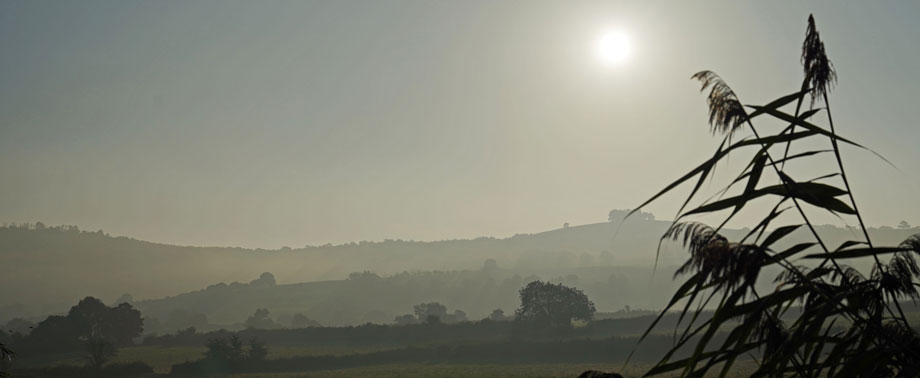
|
Contact UsAll general, membership & urgent (e.g. Press) enquiries by email to our Chairman please from whom SEG's postal address, if required, can be obtained on authenticated* request *(to avoid junk mailing etc.). HOW TO JOIN SEG: If you live, work or have a particular interest in Saltford & wish to join our email membership list please send an email to our Chairman. Please include your name, address & contact telephone number in your email application. NOTE: We provide information about membership including our simple code of conduct for members and personal data protection by SEG on our "About Us page". CONTACTS: Chairman: Phil Harding
Website Editor is Phil Harding but see website editorial/contact info. below BEFORE contacting SEG about this website Secretary: Vacant post Treasurer: Andrew Stainer
SEG Green Belt Campaign: Contact our Chairman (contact details above) Saltford Station Campaign: Chris Warren
Saltford Fairtrade Group:
History of Saltford Saltford Wombles is independent of SEG but contact details can be found on our Less Waste page. Saltford4Nature community gardening group is independent of SEG but contact details can be found on our Gardening page. Cookies and Privacy Policy Statement SEG respects the privacy of visitors to our website. We do not use cookies to collect personal or other data about visitors to our website; the only data we collect via our ISP's hosting service, and without the use of cookies, is the number of visits to each of our web pages but not who the individual visitors are. *EDITORIAL POLICY including SEO, web design and marketing for www.saltfordenvironmentgroup.org.uk As a general rule our editorial content is sourced locally in Saltford and NE Somerset or from reputable non-commercial organisations based in the UK. Will Search Engine Optimisation (SEO), website design, "content providers" and other similar companies please note that this website has all the SEO ranking, social media links, and smartphone compatibility that it requires to meet its specific objectives and enquiry emails on this topic including link requests will not receive a reply to save your time and ours. SEG is not a commercial enterprise therefore companies that produce bespoke marketing materials or sponsored editorial content should also note that marketing emails or requests for placing links to other websites* will not receive a reply as it is our policy not to reply to marketing emails of this nature unless they are from a Saltford-based organisation seeking to assist SEG. *SEG is not in a position to authenticate the accuracy and legitimacy of third party websites and/or third party editorial content.
SUPPORT FROM BUSINESS:
|
|



